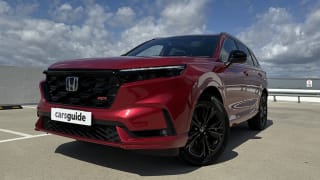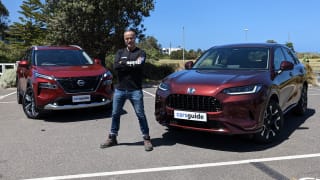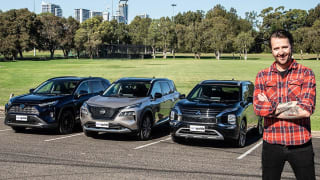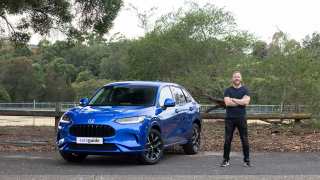Priced from $48,990 (all prices are before on-road costs), the Sealion 6 has two similar yet different rivals in its crosshairs – the Nissan X-Trail ‘self-charging’ EV-first e-Power that kicks off from $49,990, as well as the Outlander PHEV from $57,290.
The BYD comes in two grades – base Dynamic and luxury Premium for a $3000, ahem, premium – and follows China’s tried and tested formula of even fitting the base version with enough features to make consumers take note.
That means lots of standard safety kit, including autonomous emergency braking (AEB), bi-directional cross-traffic alert/braking, lane support systems, blind-spot detection and a 360-degree camera.

But it’s all the gadgets that might get you going.
Every Sealion 6 also boasts a panoramic sunroof, electrically operated tailgate, heated/folding exterior mirrors, powered/heated/vented front seats, a 15.6-inch rotating touchscreen, Infinity premium audio, two wireless phone chargers, rear privacy glass and 19-inch alloys.
Furthermore, with an electric motor under the bonnet, vehicle-to-load (V2L) functionality is possible, allowing electrical appliances to be plugged in.
Not bad for the money!
The Premium from $52,990 also scores a head-up display, a more powerful petrol engine thanks to a turbocharger and the addition of an electric motor on the rear axle for all-wheel drive (AWD). More on that later.
Note that no spare wheel is provided, just a tyre-repair kit. Not good enough, BYD.
Other established alternatives include the MG HS PHEV from China that started at $49,690 but is now $43,690 drive-away, the Honda CR-V e:HEV RS from $59,900 drive-away and the Mazda CX-60 PHEV from $73,600 BOC.


































